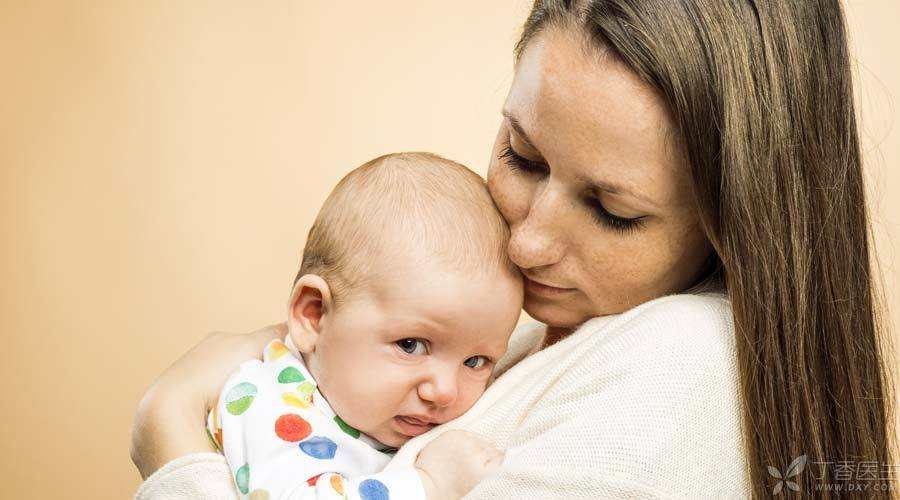
The newborn baby is very delicate, especially the structure of the skull, which is very different from that of adults. The baby’s skull is not a whole bowl-shaped bone, but consists of several weak skulls, and the gaps between these skulls are connected by connective tissue membranes.
When the baby is born, the extrusion of the birth canal will make the skull suture slightly overlap, thus the baby will pass through the mother’s birth canal more smoothly.
These gaps and defects between the skulls also provide enough room for the rapid development of the baby’s brain. With the passage of time, these gaps and defects will gradually become smaller and completely closed.
What is the fontanelle?
The baby’s head has two soft-felt depressions, which are bone defect areas formed at the junction of skulls and are medically called fontanelle. They are slightly different in size.
- Anterior fontanelle: Located at the center of the top of the head, it is rhombus-shaped, about 1-2 cm at birth, and then increases with the growth of the skull. Posterior fontanelle: located at the back of the top of the head, usually slightly smaller, not more than 1-1.5 cm in diameter, triangular.
Can fontanelle be touched?
Although the fontanelle lacks bone protection and is the weakest part of the head, it can still be touched gently, because there is also a thick dura mater under it to protect the baby’s brain. Therefore, there is no so-called “fontanelle cannot be touched”.
However, parents should pay attention to the fact that when washing the baby’s hair or wiping the fontanelle of the head, the movements must be gentle, not too hard, and it is not recommended to scratch with fingers.
As soon as the baby cried, the fontanelle bulged?
Generally speaking, this situation is normal. When the baby cries, these soft places (anterior and posterior fontanelle) may be more prominent than usual. If parents look carefully, they can also see that the fontanelle beats in line with the baby’s heartbeat.
However, if the fontanelle bulges all the time, it may be a manifestation of increased intracranial pressure. Pathological conditions such as intracranial tumor, intracranial infection (meningitis, encephalitis, etc.), hydrocephalus, etc. need to be excluded. If the baby is accompanied by fever, vomiting or other symptoms, it needs to go to the hospital immediately.

Under normal circumstances, when does the fontanelle close in what?
- Anterior fontanelle: It will gradually ossify and become smaller within 6 months after birth, and will normally close at the latest at the age of one and a half. Posterior fontanelle: Usually closed 2 ~ 3 months after birth.
If the fontanelle is not closed when you are nearly 2 years old, you need to see a doctor.
What are the reasons for the early closure of fontanelle?
If the baby’s fontanelle closes earlier, but the head circumference increases normally, it will not affect the development of the brain, but parents should closely monitor the changes of the baby’s head circumference.
If the fontanelle is closed prematurely and the head circumference is reduced, it may indicate brain dysplasia, microcephaly, etc. However, most of the time it is not easy for parents to distinguish whether the fontanelle of the baby is really closed. Therefore, professional doctors are still needed to judge.
What are the reasons for the delayed closure of fontanelle?
There are mainly the following common reasons:
- Normal variation; Congenital hypothyroidism; Increased intracranial pressure; Down’s syndrome; Rickets; Primary giant encephalopathy.
Question and Answer on Early Closure of Cranial Suture
Early closure of cranial sutures refers to the premature closure of the baby’s cranial sutures, which leads to head appearance deformity and affects the normal development of the brain at the same time. Very few cases or without timely treatment will cause serious damage to the baby’s brain. At present, the cause of early closure of cranial sutures is not clear, but some cases may be related to heredity.
1. Does early closure of cranial suture affect the baby’s what?
The degree of influence depends on how many cranial sutures are closed prematurely.
In most cases, only one cranial suture is closed too early. At this time, the baby’s brain can still develop normally, but the head shape will show obvious abnormalities.
If more than one cranial suture is closed too early, the baby’s brain may not develop normally and intracranial pressure will rise, resulting in brain damage, epilepsy, blindness and growth retardation, but this is relatively rare.
2. What should I do if I find that the baby’s cranial suture is closed early?
Premature cranial suture closure may have multiple effects on the baby’s brain development. Therefore, if the baby has premature cranial suture closure and the following conditions occur at the same time, he must seek medical treatment as soon as possible:
- Having vomiting symptoms; Become slow to move (or sleep more and play less); To behave eccentrically; Eye swelling or obstruction in eye movement; Hearing problems; Breathing is noisy or has a short breathing stop.
3. Does the baby’s head deformity have to be early closure of cranial sutures?
Not necessarily. Not all babies with head deformities belong to premature suture closure.
Some babies’ head deformities are related to their position in the mother’s belly and compression through the birth canal. Such head deformities usually return to normal within a few days to a week or so after the baby is born.
During the months after the baby is born, if you lie flat for a long time or sleep on the same side, you may also cause head deformities. If this is the case, head deformities can be corrected by changing the head position of the baby during sleep or letting the baby play on his stomach while awake.
